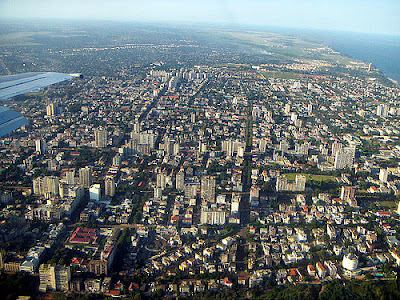 Mozambique is the world's 36th-largest country
Mozambique is the world's 36th-largest country
Mozambique's first inhabitants were San hunter and gatherers, ancestors of the Khoi san peoples. Bantu-speaking peoples, who were predominantly iron workers and farmers, began migrating into the area now known as Mozambique from the distant Niger Delta. Soon, scattered kingdoms began to arise, including those of the Shona, which extended from present-day Zimbabwe into Mozambique, and the legendary kingdom of Monomotapa, southwest of present-day Tete. Meanwhile, from around the 8th century AD, sailors from Arabia began to arrive along the coast.
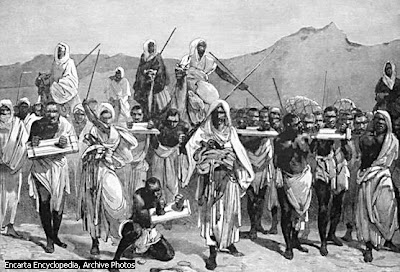
One of the most important trading posts was at Sofala, near present-day Beira, which by the 15th century was the main link connecting Kilwa with inland gold fields. Other early coastal ports and settlements included those at Ilha de Mocambique, Angoche, Quelimane and Ilha do Ibo. These were all ruled by local sultans. By the time Portuguese explorers, such as the renowned explorer Vasco Da Gama, sailed onto Mozambique in 1498, Arab commercial and slave trading settlements had existed along the coast and outlying islands for several centuries.

 World Renowned Voyager Vasco Da Gama, from Portugal
World Renowned Voyager Vasco Da Gama, from Portugal
From about 1500, Portuguese trading posts and forts became regular ports of call on the new route to the east. By the mid-16th century, ivory had replaced gold as the main trading commodity, and by the late 18th century, slaves had been added to the list. By the early 20th century the Portuguese had shifted the administration of much of the country to large private companies, controlled and financed mostly by the British, which established railroad lines to neighboring countries and supplied cheap - often forced - African labor to the mines and plantations of the nearby British colonies and South Africa. Because policies were designed to benefit white settlers and the Portuguese homeland, little attention was paid to Mozambique's national integration, its economic infrastructure, or the skills of its population.
Scenes of MaputoMozambique's capital city Maputo is one of East Africa's main ports -
Formerly called Lourenco Marques, after a Portuguese trader After World War II, while many European nations were granting independence to their colonies, Portugal clung to the concept that Mozambique and other Portuguese possessions were overseas provinces of the mother country, and emigration to the colonies soared. Mozambique's Portuguese population at the time of independence was about 250,000. The drive for Mozambican independence developed apace, and in 1962 several anti-colonial political groups formed the Front for the Liberation of Mozambique (FRELIMO), which initiated an armed campaign against Portuguese colonial rule in September 1964. After 10 years of sporadic warfare and major political changes in Portugal, Mozambique became independent on June 25, 1975.
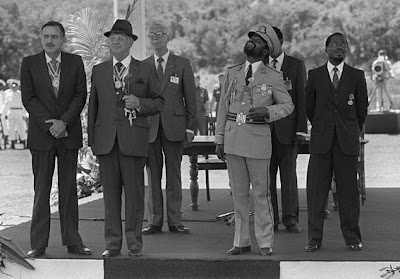 The Late President Samora Machel (in uniform), 1st President of Mozambique, and his successor President Joaquim Chisano, 2nd President of Mozambique (on the far right)
The Late President Samora Machel (in uniform), 1st President of Mozambique, and his successor President Joaquim Chisano, 2nd President of Mozambique (on the far right)President Samora Machel was born 1933 into a poor peasant family. In 1963, Machel joined the main anti-Portuguese nationalist movement, FRELIMO, and rapidly became one of its main guerrilla commanders, after receiving military training in Algeria. Following the death of Eduardo Mondlane, he led FRELIMO in bringing an end to Portuguese colonialism. At independence in 1975 he became Mozambique's first state President
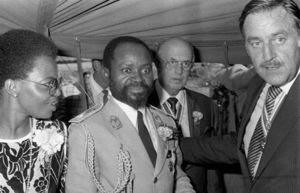 The late President Machel with his wife Graca Machel (currently wife of Nelson Mandela)
The late President Machel with his wife Graca Machel (currently wife of Nelson Mandela)Initially he declared Mozambique to be a Marxist state aligned to the Soviet Union, but this position was subsequently substantially modified. The country remained extremely vulnerable to the military and economic strength of South Africa and in 1984 Machel signed the Nkomati Accord with the Pretoria regime and agreed to deny the ANC bases in return for a cessation of South African support for Mozambican dissidents. In 1986 he was killed when his plane crashed in the eastern Transvaal, under circumstances which have never been adequately explained.
 President Joaquim Chissano, 2nd President of Mozambique
President Joaquim Chissano, 2nd President of Mozambique
The ruling FRELIMO party formally abandoned Marxism in 1989, and a new constitution the following year provided for multiparty elections and a free market economy. A UN-negotiated peace agreement between FRELIMO and Rebel Mozambique National Resistance (RENAMO) forces ended the fighting in 1992. In December 2004, Mozambique underwent a delicate transition, as Joaquim Chissano stepped down after 18 years in office.
 President Armando Emilio GUEBUZA- the 3rd and current President of Mozambique
President Armando Emilio GUEBUZA- the 3rd and current President of Mozambique
In December 2004, prominent businessman and long-time FRELIMO insider Armando Guebuza was elected to succeed Chissano. With a long-running banking and corruption scandal dominating the headlines, FRELIMO is now working to polish its public image, while RENAMO is still struggling to prove itself as a viable political party. Progress has been interrupted by natural calamities, including severe flooding in 2000 and 2001. Yet Mozambique has a remarkable ability to rebound in the face of adversity.
The economy is slowly but surely growing, and most observers count the country as one of Africa's rising stars. Armando Emilio GUEBUZA, is committed to continuing the sound economic policies that have encouraged large foreign investment. Mozambique has emerged from being the poorest country in the world, virtually destroyed by civil war, into one of the top destinations for foreign investment in Africa.
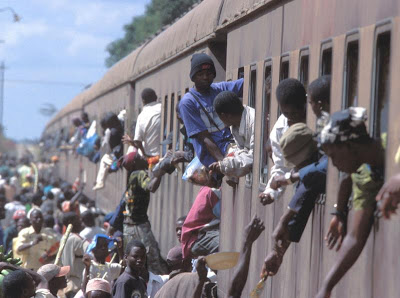 The train to Nampula, Mozambique
The train to Nampula, Mozambique
A train connects Cuamba, near the Malawi border, to Nampula, an important town in northern Mozambique; it slowly goes through the country: at every station there is always the same scene: the carriages are taken by storm by people that wants to reach another place on the railway. In a few minutes a quick market takes place with people that sell from the sideways every sort of goods: vegetables, fruit, fish, wood, sweets. Maybe an en elegant woman sitting near you continues her trip with a live chicken in your compartment. I think that this image best expresses the real everyday life of a large part of Africa.
The nation's latest big investment project is a hi-tech $1.2bn ($660m) gas plant, situated in the middle of bushland in the south of the country. The project is owned and run by the South African energy company Sasol.The government has privatised the port and boasts of its ability to attract big foreign investors, such as Sosol and BHP Billington, which has built a $2bn aluminium plant just across the bay. Mozambique has been classified as one of the major destinations for investment in Africa.
The twin pillars of Mozambique's foreign policy are maintenance of good relations with its neighbors and maintenance and expansion of ties to development partners.
 Floods in Mozambique
Floods in Mozambique
Today, the country is still in transition, with a large number of social and economic challenges, including unemployment, low agricultural production, and limited infrastructure and social services. Due to these and many other problems, Mozambique is still considered one of the poorest countries in the world. In 2003-2005 per capita income was $290, the prevalence of AIDS was 16.2 percent, and infant mortality was 101 per 1,000.
 Elephant Foetus development
Elephant Foetus development
 National Museum
National Museum
Still, over the last couple of years Mozambique has made some substantial progress in fighting poverty and improving human development. Sustained growth and increased spending in social sectors contributed to a 16 percent decline in poverty in the six years from 1997, reaching 54 percent in 2003. The performance of Mozambique's economy at the macro level has been impressive: real GDP growth since 1993 has averaged 8.1 percent, and was 7.5 percent in 2004, 7.7 in 2005, and 10 percent in 2006. Annual inflation decreased from over 54 percent in 1995 to 13.5 percent in 2003, 12.6 percent in 2004, and a substantial decrease to 6.3 in 2005.

Train Station at Maputo

Market in Maputo
One of the key challenges is the rising rates of morbidity and mortality from HIV/AIDS. The national HIV prevalence among adults (15–49 years olds) is estimated at 16.2 percent in the period 2003–05. Economic models indicate that AIDS has reduced per capita GDP growth by as much as 1 percent per annum because of reduced productivity growth, lower human capital accumulation, and reduced physical accumulation, not to mention the social burden of the disease.
 Indigo Bay
Indigo Bay
 Pemba Beach Resort
Pemba Beach Resort Matemo Island Resort
Matemo Island Resort
Tourism in Mozambique is gradually recovering the place it deserves in the national economy. In past years, the growth of investments, which resulted in the expanding of hotel accommodation and catering services capacity, and in the improvement of quality product are features that testify an encouraging forthcoming future of Tourism and Travel industry in the Mozambique. Tourism is a labour-intensive sector that integrates skills at all levels. It is linked to a diversity of economic sectors, such as transport, agriculture, food and beverage, financial services, construction and craft-making.

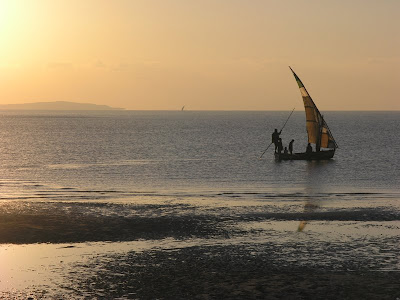
Economic reform has been extensive. More than 1,200 state-owned enterprises (mostly small) have been privatized. Preparations for privatization and sector liberalization are underway for the remaining parastatals, including telecommunications, electricity, ports, and railroads. The government frequently selects a strategic foreign investor when privatizing a parastatal. Additionally, customs duties have been reduced, and customs management has been streamlined and reformed. In 2006 Mozambique exported U.S. $2.43 billion worth of goods and imported U.S. $2.82 billion worth of goods. Support programs provided by foreign donors and private financing of foreign direct investment mega-projects and their associated raw materials have largely compensated for balance-of-payment shortfalls.

For the intrepid travelers Mozambique the land of smiles awaits you.
TRAVEL LOG BY Andrea Rasetti, an intrepid traveler, and with whose immense generosity has offered us the opportunity to use photos from her travels, had this to say from her visit to Mozambique
"Traveling in Mozambique is a really African experience: the encounters with all the people in the villages and the opportunity to see their daily life is the most deserving aspect of the journey, in particular I recommend the train from Malawi to Nampula ."
 Mozambique is the world's 36th-largest country
Mozambique is the world's 36th-largest country The Late President Samora Machel (in uniform), 1st President of Mozambique, and his successor President Joaquim Chisano, 2nd President of Mozambique (on the far right)
The Late President Samora Machel (in uniform), 1st President of Mozambique, and his successor President Joaquim Chisano, 2nd President of Mozambique (on the far right) Floods in Mozambique
Floods in Mozambique


 Mangroves near Ibo island
Mangroves near Ibo island Along the road, a lot of women carry various weights: long reeds, large baskets or faggots, often holding their babies
Along the road, a lot of women carry various weights: long reeds, large baskets or faggots, often holding their babies Handwashing in the river
Handwashing in the river Ilha de Mozambique-Fishermen homecoming Ilha de Mozambique is a small island, connected with the mainland by a long and narrow bridge; it was discovered by Vasco da Gama in 1498 and become later the most important town in the Portuguese Africa. The Ilha was inscribed in 1991 by UNESCO in the world heritage list.
Ilha de Mozambique-Fishermen homecoming Ilha de Mozambique is a small island, connected with the mainland by a long and narrow bridge; it was discovered by Vasco da Gama in 1498 and become later the most important town in the Portuguese Africa. The Ilha was inscribed in 1991 by UNESCO in the world heritage list. Ilha de Mozambique - Through the trees
Ilha de Mozambique - Through the trees

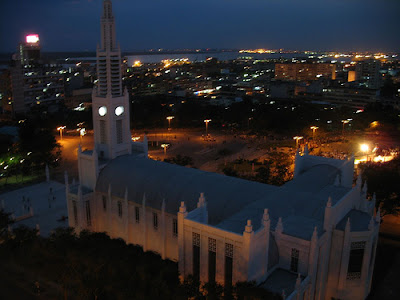





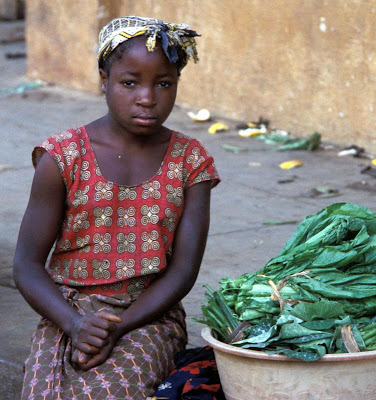

















9 comments:
Liz,
This is a great historical representation of Mozambique or Msumbiji as we call it in swahili.I like the fact that you truly cover history and all it contains in truly african perspective way.ingenious.
Habari Liz,
Surely, this is another "best-selling story". It's said in Tanzania (southern part of it,of course) that the name Mozambique was derived from the name of the former local chief/ruler of Sofala(or neighbouring area) called Musa Mbiki.
They(Tanzanians) say when Portuguese asked the indigenous people the name of their land/country, Sofala residents (found by the then newly-arived Portugusese merchants on the sea shore) kept mentioning "Musa Mbiki",probably, due to lack of understanding.
Sofala was one of the greatest East African coastal city states.The Portuguese are to blame for the downafall of both ancient Kilwa sultanate and Sofala "city" at the beginning of the 16th century.
The middlemen in the long distance trade connecting Kilwa and Mwenemutapa kingdom (via Sofala) were Yao merchants.
I always thank the Mazrui(Oman) Arabs who defeated and expelled Portuguese soldiers from Lamu,Mombasa,Zanzibar,Kilwa and Mikindani to south of River Ruvuma(the present Tanzanian border with Mozambique), in 1698 I think.I can't imagine how I would have lived under their brutal colonialism (for 500 years)!
It is also said that the Mozambican Makonde people decided to put some permanent marks on their faces to avoid Portuguese abduction and assimilation (assimilado).
Liz, is Sofala (town?) still existing? I would love to see its present pictures even if it means only the ruins!
Ahsante Liz.
Habari Jeff and Tanzania Boy,
As always thanks for the support.
Jeff: I learnt a lot about Msumbiji however it took ages to work on it as I had to translate materials from Portuguese to English. I started to work on it in March. However, I am working on a website and when migrate this on the website I hope I will cover more stuff.
Tanzania Boy: The Musa Mbiki story is one historical news that I was not aware of. Amazing. As for Sofala I will look into it further and see what I can find and share with you. The images of Sofala that I came across whilst working on this posting were suspect as I didn't think they were Sofala due to a myriad of reasons. The bulk of the information on this posting came from the Mozambique government website which has been down for a while but should be up again. The biggest hurdle is to have all the information translated from Portuguese into English. :(((
However they do also have some reports provided in English which is always a big relief.
As for colonialism, I do not advocate for colonialism due to the obvious reasons. However the African independent states borrowing the words of Kwame Nkrumah are accidents of history that colonialism bequeathed Africa. Although the states are recognized as independent territories, African states still remain at the mercy of colonialism. Case example Rwanda. Nevertheless, African states and most notably the INDIVIDUALS, the African citizenry are taking action and coming up with innovative policies/initiatives to redress the quagmire we are in.
One interesting book I would recommend is "Not Yet Uhuru" by Oginga Odinga.
One of the things one takes away from reading this book is the question "What is the African Identity?"
This is a question I find so difficult to answer.
Liz
I forgot to mention Mozambique, Maputo etc is a very very beautiful country, with numerous potential. I am amazed how they have been able to rise despite all the calamities they have had to endure. Though they may have to face and endure several hiccups in their development pursuits, from what I know I am optimistic and sure that they will succeed in their endeavors.
I hope they embrace the principle that change will have to come from the individuals themselves eg through social entrepreneurship initiatives.
Liz
What an amazing blog! You've done so much work. I'm going to put a link to your site on my blog about Mozambique. If you would like to look at the website I have made about my time in Mozambique, here's the addresss. Asante, Koxukuru, Heather
http://heatherleila3.googlepages.com/
Correctly your article helped me very much in my college assignment. Hats high to you send, will look ahead for the duration of more related articles without delay as its anecdote of my pick subject-matter to read.
We are an image research company from the Netherlands, currently working for ThiemeMeulenhoff, a publisher who primarily publishes textbooks for Dutch highschool students. For one of those textbooks about world orientation, the author would like to use the photo of the Mozambique flood.
Is it yours and do you have a high res. image an can you tell me what the costs will be? Thanks,
Best regards, Astrid Bakker Verbaal Visuele Communicatie BV, Hoofdstraat 18, 6881 TH Velp (Gld) The Netherlands, t. 0031 (0)26 4433387
Hi Astrid i dont own the floods image but would recommend searching for photos on stock exchange or flickr. There are a couple of photos there and some of the owners allow u to use them and credit them in the publications...hope this helps!
Explicação estonteneante neste blog, visões como aqui vemos dão brilho a quem quer que aparecer aqui !!!
Faz muito mais do teu blogue, a todos os teus utilizadores.
Post a Comment